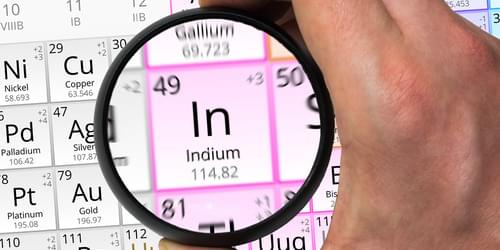Researchers have cooled indium atoms to a temperature close to 1 mK, making indium the first group-III atom to be made ultracold.
At temperatures near to absolute zero, atoms move slower than a three-toed sloth, allowing physicists to gain unprecedented experimental control over these systems. New phases of matter can form when atoms become ultracold and quirky quantum properties can emerge, yet much of the periodic table remains unexplored in the ultracold regime. Now, Travis Nicholson of the National University of Singapore and colleagues have successfully cooled indium to close to 1 mK [1]. Indium is the first “main group-III” atom—a specific group of transition metals on the periodic table—to be cooled to such a low temperature. The demonstration opens the door to studying systems with properties previously unexplored by ultracold physicists.
For their experiments, Nicholson and colleagues used a magneto-optical trap—a standard tool for trapping and cooling atoms. But because this was the first attempt at making indium atoms ultracold, the team had to make their own version of the apparatus rather than using one designed to cool other atoms. “The systems used for this research are highly customized to specific atoms,” Nicholson says. So every part of the setup from designing the laser systems to picking the screws had to be “hashed out by us.” With their custom setup, the group loaded 500,000,000 indium atoms into the trap using a laser beam and then cooled them.










Comments are closed.